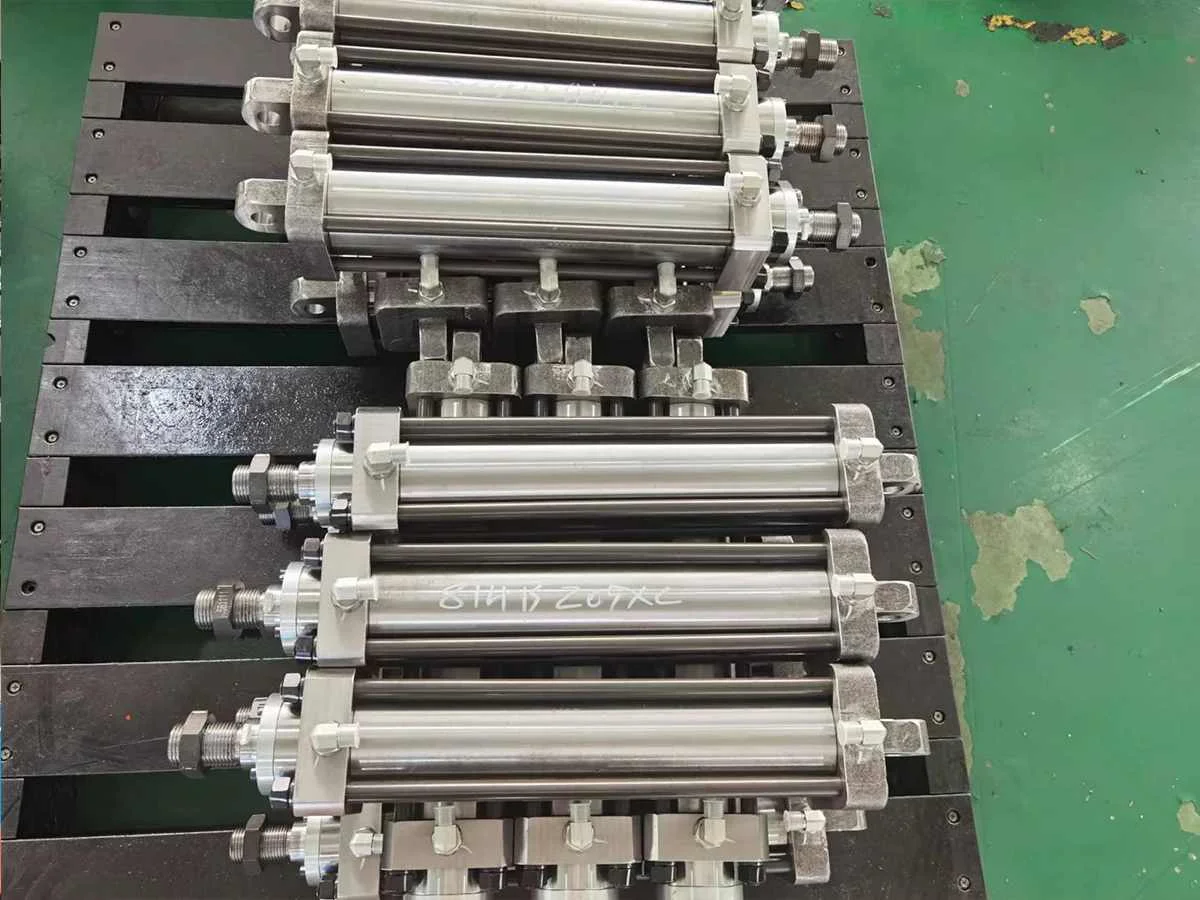Key components in hydraulic systems: reliability and life evaluation of tie rod cylinder
The tie rod cylinder is an important component in the hydraulic system and is used to convert fluid power into linear motion. They are commonly used in industrial machinery, construction equipment, and agricultural machinery. Tie rod cylinder reliability and service life are key factors in determining the overall performance and efficiency of these systems. In this article, we will discuss the factors that affect tie rod cylinder reliability and life and how to evaluate its performance.
Factors affecting the reliability and life of horizontal tie rod cylinder:
Material quality
The quality of the materials used in the manufacture of tie rod cylinders is a key factor in determining their reliability and service life. Cylinders, pistons, and rods are usually made of high-strength steel, while seals and bearings are made of rubber or other elastomers. The quality of these materials affects the cylinder's ability to withstand high pressures, resist wear, and maintain a tight seal over time.
Operating conditions
The working conditions of the hydraulic system will also affect the reliability and service life of the tie rod cylinder. Factors such as temperature, pressure, and fluid contamination can affect cylinder performance. High temperatures can cause seals and bearings to degrade more quickly, while high pressure can cause cylinders to deform or fail. Fluid contamination can also cause damage to seals and bearings, leading to leaks and reduced performance.
Maintenance and repair
Proper maintenance and repair of a tie rod cylinder is critical to ensuring its reliability and longevity. Regular inspection, cleaning, and lubrication help prevent wear and extend the life of the cylinder. Repairs should be made promptly to prevent further damage and ensure the cylinder operates at peak performance.

Evaluate tie rod cylinder performance:
Pressure test
Pressure testing is a common method for evaluating tie rod cylinder performance. The cylinder is subjected to a range of pressures to determine its maximum operating pressure and identify any leaks or weaknesses in the system. This testing can help identify potential problems before they become more serious and helps ensure that the cylinder is operating safely and efficiently.
Load test
Load testing is another way to evaluate tie rod cylinder performance. The cylinder is subjected to a range of loads to determine its maximum load capacity and identify any weaknesses or deformities in the system. This test helps ensure that the cylinder can withstand the loads it will encounter in its intended application and helps prevent premature failure.
Endurance test
Durability testing is a long-term test used to evaluate the reliability and longevity of tie rod cylinders. Cylinders are subjected to a range of operating conditions over an extended period of time to determine their ability to withstand wear and maintain their performance over time. This test can help identify potential problems that may develop during the cylinder's service life and help ensure that the cylinder will operate reliably throughout its expected service life.
The tie rod cylinder is an important component in hydraulic systems, and its reliability and service life are key factors in determining the overall performance and efficiency of these systems. The quality of the materials used in its construction, the operating conditions of the hydraulic system, and proper maintenance and repair all play an important role in determining its performance. Evaluating the performance of tie rod cylinders through pressure testing, load testing and durability testing helps ensure they operate safely and efficiently and helps prevent premature failure.
https://www.toringcylinder.com/reliability-and-life-evaluation-of-tie-rod-cylinder.html
- Art
- Causes
- Crafts
- Dance
- Drinks
- Film
- Fitness
- Food
- Giochi
- Gardening
- Health
- Home
- Literature
- Music
- Networking
- Altre informazioni
- Party
- Religion
- Shopping
- Sports
- Theater
- Wellness


